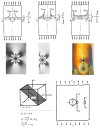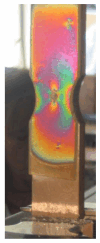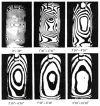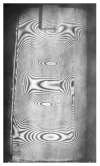The Formation of the Strength of Castings including Stress and Strain Analysis
- PMID: 38893748
- PMCID: PMC11172548
- DOI: 10.3390/ma17112484
The Formation of the Strength of Castings including Stress and Strain Analysis
Abstract
This article presents some views on the subject of self- or residual stresses, trying to clarify some erroneously seemingly ingrained formulations in the introduction, which are widely used in castings and their classification (thermal, shrinkage, and phase stresses). For example, the location of their occurrence is often not specified, nor in which cross sections (volumes) they balance. In thin bars there are uniaxial stresses and in thin plates, stresses in two orthogonal directions are considered, while in castings, which are always three-dimensional objects, stresses in all planes should be considered. Meanwhile, to make matters worse, the complexity of calculations and possible experiments is rapidly increasing from the 1-axis to the 3-axis condition. A detailed analysis is made of how tensile and compressive stresses are calculated as a function of casting wall thickness, taking into account heat flow between walls of different thicknesses. The article presents selected methods of stress and strain testing, with particular emphasis on elasto-optical testing.
Keywords: casting; elasto-optics; operational stresses; residual stresses; strength of castings; thermal stresses.
Conflict of interest statement
The author declares no conflicts of interest.
Figures














References
-
- Jun T.-S., Korsunsky A.M. Evaluation of residual stresses and strains using the Eigenstrain Reconstruction Method. Int. J. Solids Struct. 2010;47:1678–1686. doi: 10.1016/j.ijsolstr.2010.03.002. - DOI
-
- Rossini N.S., Dassisti M., Benyounis K.Y., Olabi A.G. Methods of measuring residual stresses in components. Mater. Des. 2012;35:572–588. doi: 10.1016/j.matdes.2011.08.022. - DOI
-
- Shet C., Deng X. Residual stresses and strains in orthogonal metal cutting. Int. J. Mach. Tools Manuf. 2003;43:573–587. doi: 10.1016/S0890-6955(03)00018-X. - DOI
-
- Tabatabaeian A., Ghasemi A.R., Shokrieh M.M., Marzbanrad B., Baraheni M., Fotouhi M. Residual Stress in Engineering Materials: A Review. Adv. Eng. Mater. 2022;24:2100786. doi: 10.1002/adem.202100786. - DOI
-
- Wyatt J.E., Berry J.T., Williams A.R. Residual stresses in aluminum castings. J. Mater. Process. Technol. 2007;191:170–173. doi: 10.1016/j.jmatprotec.2007.03.018. - DOI
Publication types
Grants and funding
LinkOut - more resources
Full Text Sources

